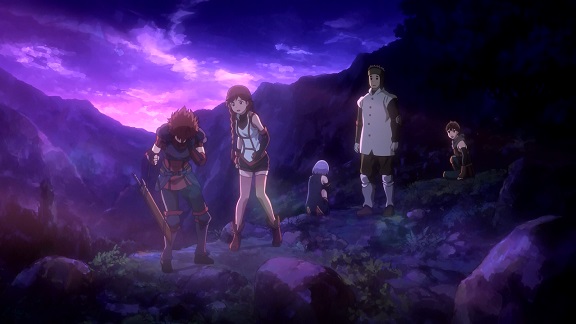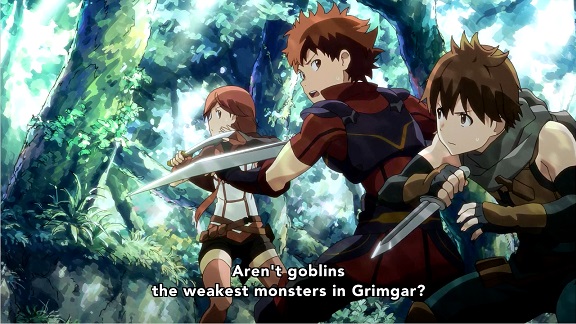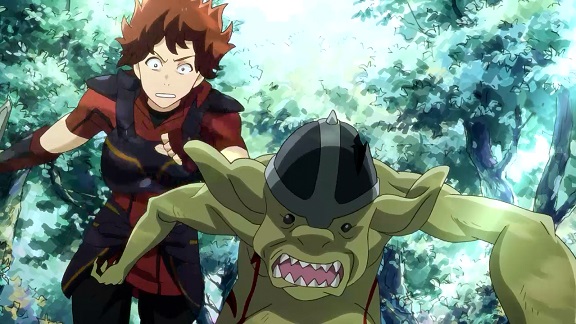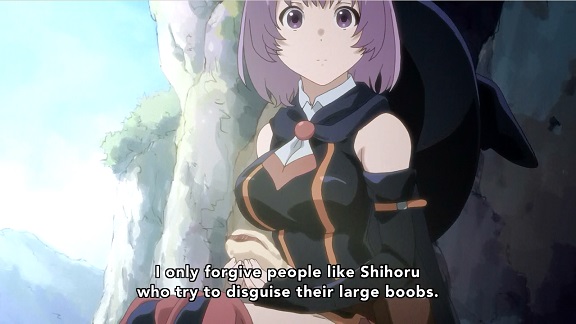Perhaps it’s not entirely accurate to call Hai to Gensou no Grimgar overlooked, but it did sort of get snowed under by first KonoSuba and then Re:Zero in the Trapped in Fantasyland genre. I’ve talked about Grimgar before. For me it was one of the best series this year for its treatment of grief, fanservice and what it would actually be like to be transported to a fantasy world. It helps that the animation itself is gorgeous, the background scenery especially, but also the fight choreography as shown above.
Grimgar‘s plot is fairly simple: a group of people is transported to a magical world, losing most of their memories in the process and are immediately drafted to fight in a low level race war against goblins and other fantasy monster races. Most of the competent people go off on their own, leaving our group of six losers to band together to try and survive, having to kill monsters to earn money to pay the rent. And this not a sterile exercise of monster slayers: the goblins they encounter are clearly thinking, feeling creatures fully capable of feeling fear or pain when they’re chased down, as above. This theme is mostly prevelant in the first four or so episodes, before the story moves on to other matters
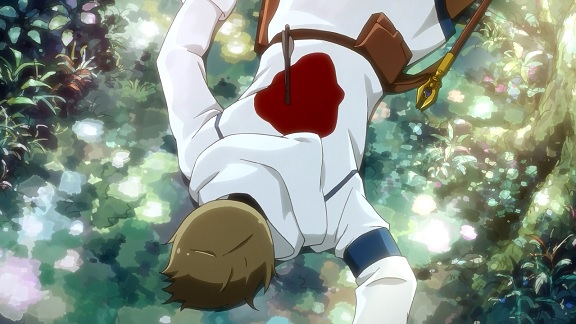
The reason the story moves on is the death of one of the original crew: Manato, the defacto leader who kept the team together. His death hits the team hard, as you might expect and the rest of the series, but especially episode four and five explore his death and the grief felt by his team mates. At first there’s anger and denial, a refusal to believe he really is dead and it is only after they were forced to cremate him that anger makes way for a dull acceptance. The party is splintered, robbed off its heart, each of them alone and lonely and only capable of thinking of their own grief, something the opening scenes of episode five make painfully clear. What makes Manato’s death especially hard to deal with is that it was avoidable: the party got caught up in its own hubris, became careless, took one too many risks. And thanks to pre-existing tensions in the team, they find it hard to overcome their grief and come back together.
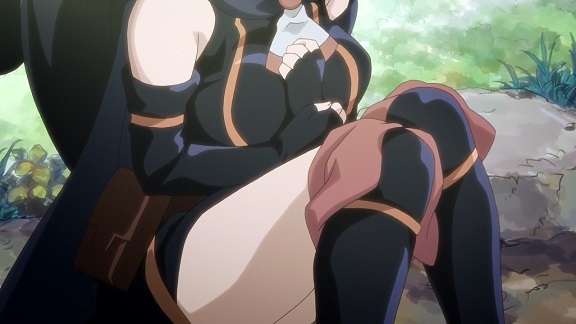
The reasons for the tensions can mostly be summed up in one word: Ranta. The redhaired, impulsive sword fighter of the team, from episode one Ranta has been sexually harassing the girls in the team, with the three other boys neither joining in but at first not stopping him either. Because these are strangers needing each other to survive rather than friends, there is this tension between wanting to shut him up and not wanting to risk his temper because they need him. That this takes its toll on the two girls is less recognised, at least at first. It needs Manato’s death to be resolved. Grimgar makes it clear that the usual anime light sexual harassment antics are actually pretty disgusting and upsetting to the people on the receiving end. Unfortunately the camera hasn’t gotten the message and the focus on the female characters far too often rests on their butts, breasts or legs, undermining its own message.
This was day eleven of the Twelve Days of Anime. Next: Showa Genroku Rakugo Shinju.
